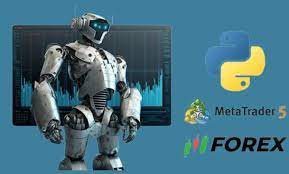
In the dynamic realm of foreign exchange (forex) trading, technological advancements have continually reshaped the landscape, offering traders innovative tools to enhance their strategies and maximize profits. Among these tools, forex robot have emerged as a game-changer, revolutionizing the way traders engage with the market. These automated systems, powered by algorithms, execute trades on behalf of traders, promising efficiency, accuracy, and round-the-clock trading capabilities. Let’s delve into the world of forex robots, exploring their functionalities, benefits, and considerations for traders.
Understanding Forex Robots:
Forex robots, also known as expert advisors (EAs), are computer programs designed to analyze market data, identify trading opportunities, and execute trades automatically on behalf of traders. These robots operate based on predefined trading rules and algorithms, eliminating the need for manual intervention. By leveraging advanced mathematical models and historical data analysis, forex robots aim to capitalize on market fluctuations and execute trades with precision and speed.
Functionality and Features:
The functionality of forex robots varies depending on their design and complexity. However, they typically offer a range of features aimed at optimizing trading performance. Key functionalities include:
- Automated Trading: Forex robots execute trades autonomously, without requiring constant supervision from traders. This allows for 24/7 trading activity, capturing opportunities in global markets regardless of time zones.
- Algorithmic Analysis: These robots employ sophisticated algorithms to analyze market data and identify trading signals. They can assess multiple indicators simultaneously, enabling rapid decision-making based on predefined criteria.
- Risk Management: Many forex robots incorporate risk management protocols to mitigate losses and protect capital. They can set stop-loss and take-profit levels, adjust position sizes according to account balance, and implement other risk-control measures.
- Backtesting and Optimization: Prior to deployment, forex robots undergo rigorous testing using historical data to assess their performance under various market conditions. Traders can optimize parameters to enhance profitability and minimize risks.
- Customization: Advanced forex robots often offer customization options, allowing traders to tailor trading strategies to their preferences and risk tolerance levels. This flexibility enables adaptation to changing market dynamics and individual trading styles.
Benefits of Forex Robots:
Forex robots offer several compelling advantages for traders seeking to streamline their operations and improve trading outcomes:
- Efficiency: By automating trading processes, forex robots eliminate the need for manual analysis and order execution, saving time and effort for traders.
- Emotion-Free Trading: Emotions such as fear and greed can cloud judgment and lead to irrational trading decisions. Forex robots execute trades based on predefined rules, free from emotional biases, thereby promoting disciplined trading.
- 24/7 Trading: Unlike human traders who need rest, forex robots can operate around the clock, seizing opportunities in global markets even during non-trading hours.
- Speed and Precision: Forex robots can analyze market data and execute trades with lightning speed, capitalizing on fleeting opportunities and minimizing latency-related risks.
- Diversification: Forex robots enable traders to diversify their portfolios by trading multiple currency pairs simultaneously, spreading risk and enhancing overall portfolio performance.
Considerations for Traders:
While forex robots offer compelling benefits, traders should approach their use with caution and consider the following factors:
- Strategy Development: Effective use of forex robots requires a sound understanding of trading strategies and market dynamics. Traders must develop or select robust algorithms that align with their investment goals and risk tolerance.
- Risk Management: Despite their potential to automate risk management, forex robots can still incur losses during volatile market conditions or due to technical glitches. Traders should implement comprehensive risk management protocols and monitor robot performance closely.
- Broker Compatibility: Not all brokers support automated trading or allow the use of forex robots on their platforms. Traders should ensure compatibility between their chosen robot and broker to avoid potential issues.
- Continuous Monitoring: While forex robots operate autonomously, periodic monitoring is essential to evaluate performance, adjust parameters, and intervene if necessary. Traders should remain vigilant and intervene promptly in case of unforeseen events or unfavorable market conditions.
- Cost Considerations: While some forex robots are available for free or at a one-time cost, others may involve ongoing subscription fees or profit-sharing arrangements. Traders should weigh the costs against potential benefits to determine the overall value proposition.
Conclusion:
Forex robots represent a powerful tool for traders seeking to automate and optimize their trading activities. By harnessing the power of algorithms and technology, these automated systems offer efficiency, precision, and round-the-clock trading capabilities. However, successful implementation requires careful strategy development, robust risk management, and ongoing monitoring. Traders should approach the use of forex robots thoughtfully, considering their individual objectives, risk tolerance, and the suitability of available options. When used judiciously, forex robots can complement traders’ efforts, unlocking new opportunities in the dynamic world of forex trading.